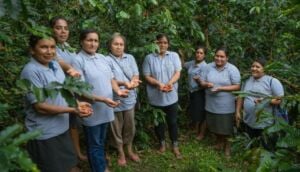Last summer, Jennifer Sigler, the Chief Operating Officer at Global Giving, shared with me that her entire staff was reading the Lean Startup by Eric Ries. The idea that a senior manager of a non-profit would have all of her employees read a book about start-up strategy sounded unconventional and fresh. After our meeting, I headed straight to the local bookstore to pick up a copy and quickly realized Jennifer was onto something big.
Startup strategy is no longer just applicable to the new tech company; it’s a secret weapon for innovators and social intrapreneurs at all levels of large established corporations, nonprofits and civic institutions. The tactic is especially relevant to those working on pressing social issues, such as poverty and education, and are constrained by tight budgets and limited resources for new ideas. As you start considering the startup strategies for your institutional innovations, here are four potential outcomes to focus on:
1. Create a common language for innovation strategies across the organization
The brilliance of having an entire team TISI +0.28% read a book about startup strategy is that it provides a common language for members of every part of the organization to share, plan and evaluate innovation. The Lean Startup mixes simple scientific ideas with plain speak on strategy, and the model allows seemingly complex “Silicon Valley” concepts to become tangible to the bureaucratic organization. Introducing the lean or other start-up model creates a baseline understanding on how an innovation can proceed through bureaucracy, and into piloting and scaling.
2. Develop a more agile organization (while keeping your talent engaged)
Often when working for a startup, you can give yourself whatever job title you like. This is because during the bootstrapping phase titles are irrelevant and staff members may be asked to wear different hats on different days, meaning individual roles can change quickly as the organization grows. A large organization can harness the startup energy that results from this through what the MIT Media Lab Director Joi Ito describes as an “anti disciplinary”…. The anti-disciplinary approach pushes staff to think differently about their jobs and their colleagues’ jobs by spending time on tasks outside their expertise. In this process staff gain new skill sets and the organization creates a higher level of adaptability to new circumstances in a rapidly changing environment. A less radical approach, but a more practical avenue to startup staffing agility, is a contracting practice the Harvard Business Review calls“Tours of Duty”. Tours of duty are time bound and shorter term assignments that enable employees to rotate into different roles, building diverse skill sets while providing their organization with an ability to better adapt to changes in their sector.
3. Engage Core Customers/Beneficiaries with Minimally Viable Products (MVPs)
The minimally viable product (MVP), introduced to Eric Reis REIS +0.25% by his mentor Steve Blank and deeply explored in his book, is perhaps the most adaptable strategy for larger organizations to utilize. In a nutshell, MVPs (like a prototype) are the most basic version of a product, program, platform, etc. that enables the employee to test out their innovation with the intended customer/beneficiary and get feedback before releasing the official version(for a more detailed explanation, check out this animated lecture).
MVPs are extremely useful for socially focused organizations with limited budgets, and can help ensure accountability to target beneficiaries. UNICEF has leveraged the technique with great success, particularly the UNICEF Innovations team which has used participatory prototyping and rapid deployments to improve maternal health and vaccination distribution. TheUNICEF Social and Civic Media Team with their innovative mapping tool,UNICEF Geographic Information System, continuously engage one of UNICEF’s core constituencies, young people, in testing the latest iterations and features of the tool. Leveraging its social media network Voices of Youthand working with technical partner Innovative Support to Emergencies Diseases and Disasters (InSTEDD), the UNICEF civic mapping platform has developed in partnership with young people and empowered youth to report and take action on environmental hazards in Brazil, Haiti, Argentina, and starting next month, Kosovo.
4. Allow teams to bounce back faster from failure
Like start-ups, new innovations and ideas inside organizations have a high rate of failure. Among intrapreneurs and innovators, the idea of “failing fast” or “failing better” is a strong one. There are even FAILFaires which serve as a type of group therapy for learning from mistakes. However, for large and more traditional companies, the idea of allowing “failure” for innovative growth can be difficult and scary. Framing the process of learning and achieving in the face of failure as part of the innovation lifecycle is critical. The lean model’s pivot or preserve is one concept that can help managers and teams set practical and timely mechanisms for evaluating new innovations. It creates a space for well thought-out risks and provides milestones where course adjustments can be made based on aspects of an innovation that are not working.
Are you involved in cross-sector collaboration in Europe? Apply to Ashoka’s competition, Social & Business Co-Creation: Collaboration for Impact, which is open to social entrepreneurs, non-profits, companies, and public sector organizations. Entries can include early stage ideas or fully established projects, as long as they involve a minimum of two partners from different sectors. Multi-partner projects are encouraged to apply. Entries close on April 10 2014, 23:59 CET.










